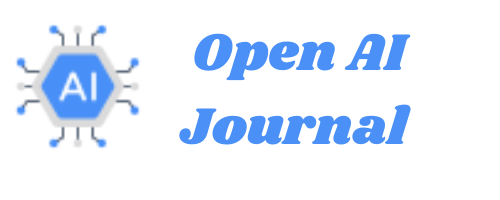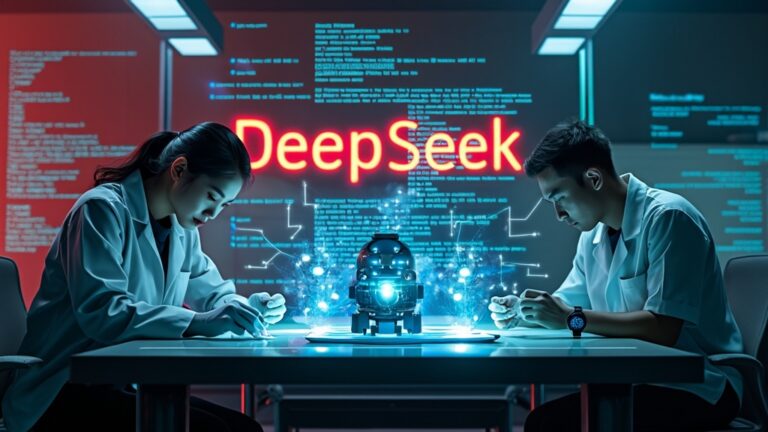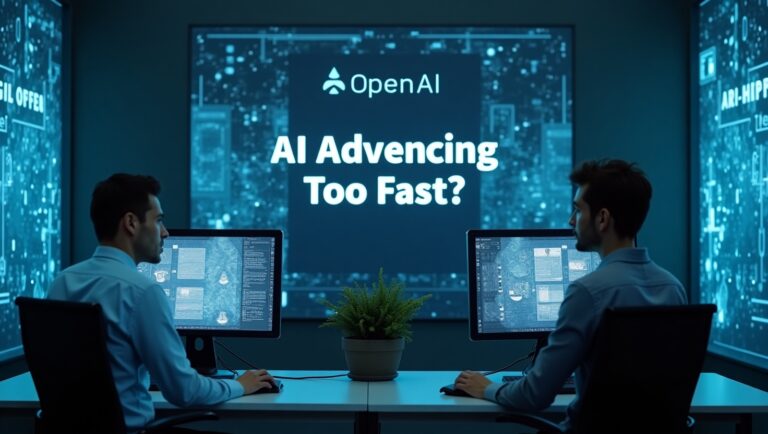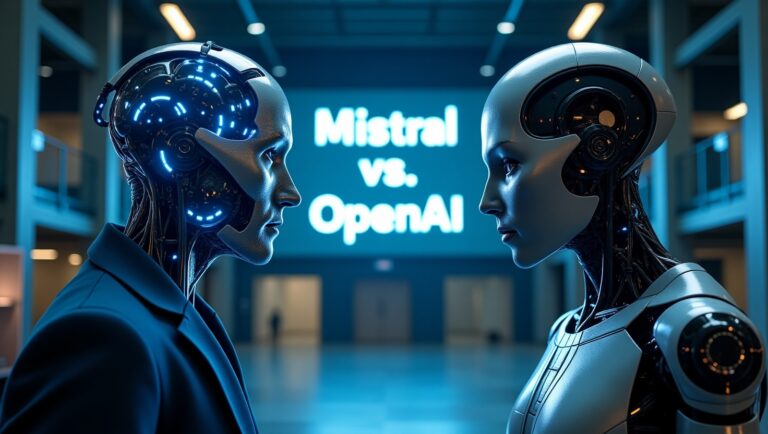GPT-5: OpenAI’s Most Dangerous Move Yet?

Table of Contents
When OpenAI teased then unveiled GPT-5, the air changed. Investors tightened their jaws, policymakers shuffled emergency memos, and rival labs blinked awake wondering whether their models would be left in the dust. If earlier GPT iterations felt like a telescope suddenly placed in your backyard revealing an incomprehensibly vast universe GPT-5 is being framed as the observatory itself: larger, smarter, eerier.
This article takes you inside the hype and the hazard. I’ll argue two blunt points: first, GPT-5 is likely the most consequential consumer-available AI yet; second, that consequence carries both enormous opportunity and real, under-discussed dangers. Expect technical notes, human stories, and a little bit of scandal bait thrown in to keep the debate hot.
Quick primer: what “GPT-5” is (and isn’t)

For readers who want a short checklist:
- GPT-5 is the successor to GPT-4.x family (OpenAI’s prior models), aiming for stronger reasoning, broader multimodal capability, and more reliable code generation.
- It’s billed as multi-modal, more context-aware, and trained on far larger, possibly more curated datasets.
- Not a human mind. It optimizes patterns of language, code, and other data. Its outputs can seem humanlike but remain mechanistic.
- Regulatory pressure is real. Multiple governments are circling, and firms are bracing for compliance headaches.
Why GPT-5 feels different : beyond size and flattery
Every model iteration claims to be bigger, faster, better. But GPT-5’s difference is qualitative as well as quantitative:
- Cross-modal fluency. Where earlier models specialized in text (and later added images and code), GPT-5’s architecture is reportedly designed to fuse modalities more natively , meaning it can reason across text, images, code, spreadsheets, and maybe even video in a single thought process. That shifts the kinds of tasks it can automate.
- Depth of reasoning. Anecdotes circulating in tech circles suggest GPT-5 sustains longer chains of logical deduction before drifting into hallucination territory. That’s enormous for tasks like drafting legal summaries, analyzing datasets, and producing correct code.
- Tool use and customization. GPT-5 appears to be shipped with stronger built-in tool interfaces more reliable web access, internal calculators, and code execution hooks that allow it to run code and verify outputs in-situ (a major reduction in hallucinations when done right).
- Deployability at scale. OpenAI’s enterprise partners reportedly get new production tools, low-latency APIs, and model variants optimized for different levels of fidelity vs cost. That accelerates adoption across industries.
These capabilities push GPT-5 from “assistant” to “co-worker.” That’s thrilling and terrifying.
The upside: radically productive, creative, and democratizing

Let’s not be melodramatic. GPT-5 could be transformational in positive ways:
- Productivity for knowledge workers. Imagine near-human assistants that draft proposals, research literature reviews, summarize months of transcripts, and prepare polished visuals and code all in a single session. Many time-consuming tasks vanish.
- Smarter education and tuition. Personalized tutors that understand a student’s exact misconceptions, produce targeted exercises, and explain concepts with multiple analogies might make one-on-one tutoring cheap and ubiquitous.
- Healthcare triage and analysis (with guardrails). Faster literature synthesis, chart summarization, and clinical trial meta-analysis can accelerate research and care , if regulators mandate safe deployment.
- SMBs and entrepreneurs. Small companies can now build sophisticated services with tiny teams: apps, automation, campaign copywriting, and even custom code could be whipped up in hours.
- Creative collaboration. From film writers to game designers, GPT-5’s multimodal synthesis could spark new art forms and hybrid media.
The dark side : not the usual hype

Most coverage lists hallucinations, bias, job displacement, and security as the main concerns. Those are real. But GPT-5 introduces subtler threats that aren’t being debated loudly enough.
1) The Surveillance-Scale Feedback Loop
Large models trained on massive datasets reproduce existing power dynamics. But GPT-5’s outputs feeding back into the internet polished articles, optimized ad copy, synthetic audio/video can create a feedback loop where AI-generated content becomes the primary training signal for future AIs. Human-authored knowledge could be systematically crowded out, amplifying errors and consolidating specific worldviews.
2) The “Authorized Speaker” problem
If enterprises and governments adopt GPT-5 to produce official communication, machine-crafted language can become the default for public discourse. Who vetts that language? How will public records look when machine-authored memos shape policy? The risk: a homogenized, subtly optimized rhetorical style that nudges public opinion without clear authorship.
3) Asymmetric advantage and geopolitics
Nations and corporations with early access get outsized economic and military advantages. GPT-5 could sharpen cyber capabilities, improve code exploitation discovery, or speed up R&D advantages that widen the gap between major tech powers and the rest of the world. That’s not sci-fi; it’s strategic reality.
4) The labor dislocation question : faster and stealthier
Automation won’t just hit repetitive work; it will affect knowledge work: legal research, journalism first drafts, routine data science, and software engineering. But because GPT-5 acts as a collaborator rather than a replacement, layoffs may creep in subtly: fewer hires for the same output, restructuring to favor people who can manage AI systems. That makes social safety nets and policy responses harder to design.
The hallucination paradox : smarter but still slippery
Even improved reasoning doesn’t eliminate hallucinations. There are three reasons they persist:
- Objective mismatch. The model optimizes for probable-sounding outputs, not truth. Improvements reduce error rates but don’t flip the objective.
- Out-of-distribution queries. When asked about unique legal details, early experimental results suggest GPT-5 can hallucinate with more confidence than earlier models , a dangerous combo if outputs are uncritically trusted.
- Tool misuse. If GPT-5’s code execution tools are misconfigured, or if it’s fed bad data sources via internet lookups, its confidence can magnify falsehoods.
This is why deployment design matters: using model chains that verify outputs (calculation checks, citations, retrieval augmentation) is non-negotiable.
Ethics, safety, and the OpenAI conundrum

OpenAI occupies a strange institutional role: it’s simultaneously a research lab, a commercial company, and a quasi-regulatory voice that advises governments. GPT-5 intensifies this tension.
The safety theater critique
Critics will say OpenAI does safety theater announce measures publicly to appease regulators while shipping capabilities aggressively to keep market leadership. The counterargument: shipping enables real-world stress-testing that research-only environments cannot match. Which side is right? The answer matters because it shapes how aggressively policy should restrain deployments.
Transparency vs. competition
Full transparency (model weights, training corpora) would help research and oversight , but leaks would accelerate misuse. OpenAI’s approach has been partial openness: some technical papers, some safety docs, and commercialized APIs. For GPT-5, that compromise may break down: governments and watchdogs will call for more accountability.
The “alignment” myth
OpenAI talks about alignment , making models that act in humans’ long-term interest. But alignment at scale with thousands of commercial customers is messy. Contracts, product roadmaps, and business incentives often conflict with strictly altruistic alignment goals.
The job debate: apocalypse or reshuffling?
Every tech revolution generates panic. But the GPT-5 debate should be precise:
- Short-term: Increased efficiency, fewer junior hires, faster product cycles. Some roles like entry-level content creation , will be most exposed.
- Mid-term: New roles emerge , AI prompt engineers, model auditors, “AI ethicists” employed to monitor outputs , but these are likely concentrated in hubs and high-skill labor markets.
- Long-term: If automation of reasoning tasks broadens, labor markets may face persistent structural unemployment without proactive policy: retraining, universal basic income (UBI) pilots, or job guarantee programs.
The political dimension is explosive: will governments tax AI super-profits? Will unions demand protections for creative professions? Expect headlines, strikes, and policy scaffolding.
The enterprise gold rush , but at what cost?
Enterprises will race to integrate GPT-5:
- Software companies use it to ship features faster.
- Media firms automate summaries and ad targeting.
- Legal and medical practices use it for document triage and research support.
Yet this gold rush invites vendor lock-in and concentration risk. If a handful of firms control the best GPT-5 endpoints and the plug-and-play governance features, competitors and countries without partnerships will be excluded. The result: concentration of technological and economic power.
Security and dual-use : the silent escalation
GPT-5 improves code generation and vulnerability discovery, which has two sides:
- Helpful side: It helps developers find and fix bugs faster huge for software quality.
- Dangerous side: It lowers the barrier to writing sophisticated malware or automating cyberattacks.
The “dual-use” nature will create a new arms race between defensive AI and offensive misuse. Cybersecurity teams will need GPT-level tooling to keep pace, which increases costs and raises the stakes in national cyber policy.
Journalism and truth: how GPT-5 reshapes storytelling
Newsrooms are an obvious target. With GPT-5, the mechanics of journalism shift:
- Faster first drafts may allow reporters to focus more on investigation.
- Automated summarization might help collate public records quickly.
- But the speed makes misinformation production and distribution easier. Deepfakes paired with plausible, AI-drafted narratives will be weaponized by bad actors.
This raises practical questions: should outlets label AI-assisted content? Will readers trust bylines? Or will citation standards and provenance tracing become a market differentiator?
Policy proposals that could matter ; bold but workable
If GPT-5 becomes foundational, policy needs to aim for resilience. Here are practical proposals , some controversial:
- Provenance tagging by default. Outputs generated by high-impact models must carry cryptographic provenance metadata signifying origin and timestamp.
- Model impact assessments (MIAs). Like environmental impact assessments, major model releases would require independent audits to examine social and economic risks.
- Access tiers linked to verification. Sensitive or potentially harmful tool endpoints (code-execution, deepfake generation) should only be accessible to verified, audited organizations.
- Public utility endpoints. Governments could fund open, limited-capability endpoints to ensure equitable access for public-interest groups, researchers, and smaller nations.
- Taxing automation gains. Consider a progressive tax structure on automation-driven productivity gains to fund worker transition programs.
None of these are easy. Expect fierce pushback from vested commercial interests , especially the access/verification and taxation proposals.
GPT-5 vs other labs : the competitive landscape
OpenAI’s release doesn’t occur in a vacuum. Anthropic, Google DeepMind, Meta, and a host of startups will respond. Competition could spur safer models (through divergent designs) or it could pressure firms into cutting safety corners to release first.
But there’s another risk: convergent monoculture. If everyone trains models on largely overlapping data and optimizes for similar benchmarks, we get less diversity in reasoning and more systemic archival bias.
Real people, real stories : the human cost
Policies and engineering matter, but anecdotes land hardest. Consider these vignettes (composite, anonymized):
- A mid-career paralegal wakes to find the firm automating routine discovery processes with a GPT-5 pipeline. She’s offered retraining but faces a 40% pay cut in the new role.
- A small indie game studio uses GPT-5 for dialog generation and ships more content with fewer hires , but loses the unique voice that once made their titles stand out.
- A non-profit uses GPT-5 to scale legal aid drafts for low-income tenants suddenly, legal support is accessible where it wasn’t before.
These stories show how GPT-5 will create winners and losers, sometimes in the same breath.
The PR fight : how OpenAI will sell GPT-5 to the world
OpenAI needs to do three things publicly:
- Sell utility : show enterprise ROI and human productivity wins.
- Demonstrate safety : publish benchmarks and third-party audits.
- Manage optics : respond fast to misuse and provide remediation tools.
Watch the messaging: “aligned” and “safety-first” phrases will pepper every blog post and press release. But actions speak louder: transparency about failures, open bug bounty programs, and community governance seats will count more.
How to prepare (for individuals, businesses, and policy makers)
If you don’t want to be steamrolled, here’s a playbook.
For individuals
- Learn to work with AI. Basic prompt skill and evaluation ability will become core digital literacy.
- Build T-shaped skills. Combine domain expertise with AI systems management.
- Document and verify. Keep provenance of work and be ready to prove originality where needed.
For businesses
- Audit processes. Identify tasks where GPT-5 can safely augment versus tasks needing human oversight.
- Invest in guardrails. Verification layers, human-in-the-loop approvals, and monitoring.
- Reskilling programs. Invest early in employee retraining to redeploy staff into higher-value tasks.
For policymakers
- Mandate impact assessments for high-capacity models.
- Fund independent audits and public-interest model endpoints.
- Pilot social safety nets in regions hit first by automation.
Counterarguments: why the panic may be overcooked
To be fair, there are mitigating factors:
- Human judgment still matters. For many high-stakes tasks, the human oversight required will remain binding for years.
- Economic absorption. Historically, automation creates new types of jobs and industries , the same could happen here.
- Regulatory brakes. Governments, once alerted, often impose restrictions that temper unfettered rollout.
So yes, GPT-5 won’t instantly replace everything. But the pace and scale of changes matter far more than binary doomsday predictions.
The biggest unanswered questions
As GPT-5 rolls out, these questions will shape the stakes:
- Who exactly controls the highest-capability endpoints? Private firms, consortia, or governments?
- Will provenance become standard? Or will obfuscation win?
- How will international norms form? Will major powers coordinate or compete in secret?
- Can alignment scale with commercialization? Or will profit incentives create misalignment?
Answers will determine whether GPT-5 becomes a force that enriches many or a lever that consolidates power.
Final verdict : two scenarios to watch
I’ll close by sketching two plausible futures and one pragmatic path between them.
Optimistic scenario: “Augmentation, not annihilation”
GPT-5 becomes a ubiquitous assistant. Institutions enforce provenance standards. Policies fund transitions. Small teams and individuals benefit. Diversity of voices remains intact. Ethical deployment is the norm.
Pessimistic scenario: “Consolidation and feedback”
Large platforms dominate. AI-generated content floods feeds and trains future models, amplifying bias and errors. Market concentration rises, small players are squeezed, and geopolitical tensions spike as nations race for AI dominance.
Pragmatic path: regulated competition + public infrastructure
Encourage competition that is transparent; mandate impact audits; fund public endpoints for research and public interest; tax automation gains to fund reskilling. It’s messy, political, and necessary.






